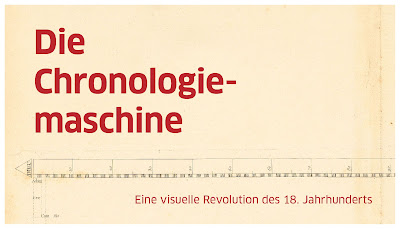I am very happy to be contributing to an exhibition in Berlin created by PD Dr Astrit Schmidt-Burkhardt. It is Die Chronologiemaschine - Eine visuelle Revolution des 18. Jahrhunderts.
What does history become? Who are the protagonists, what is passed on? The doctor and polymath Jacques Barbeu-Dubourg (1709-1779) wanted to record, graphically visualize and make available nothing less than comprehensive world history. To do this, he invented a machine made of paper and glue: the Chronology Machine. Its centrepiece was a horizontal panorama of world history well over sixteen metres long.The exhibition shows the media-archaeological significance of the apparatus and the visual revolution it initiated: the unexpected boom in infographics in the Age of Enlightenment.
Opening dates and times
LocationFriday 8 September – Sunday 8 October 2023
Tue-Sun 10am-6pm
Thu 10am-8pm
except public holidays
Admission is free
Stabi KulturwerkStaatsbibliothek zu BerlinUnter den Linden 810117 Berlin
In July 2022, the Staatsbibliothek (Berlin State Library) opened a new exhibition area: the Stabi Kulturwerk makes diverse cultural heritage accessible and is a place for joint discovery and research.










